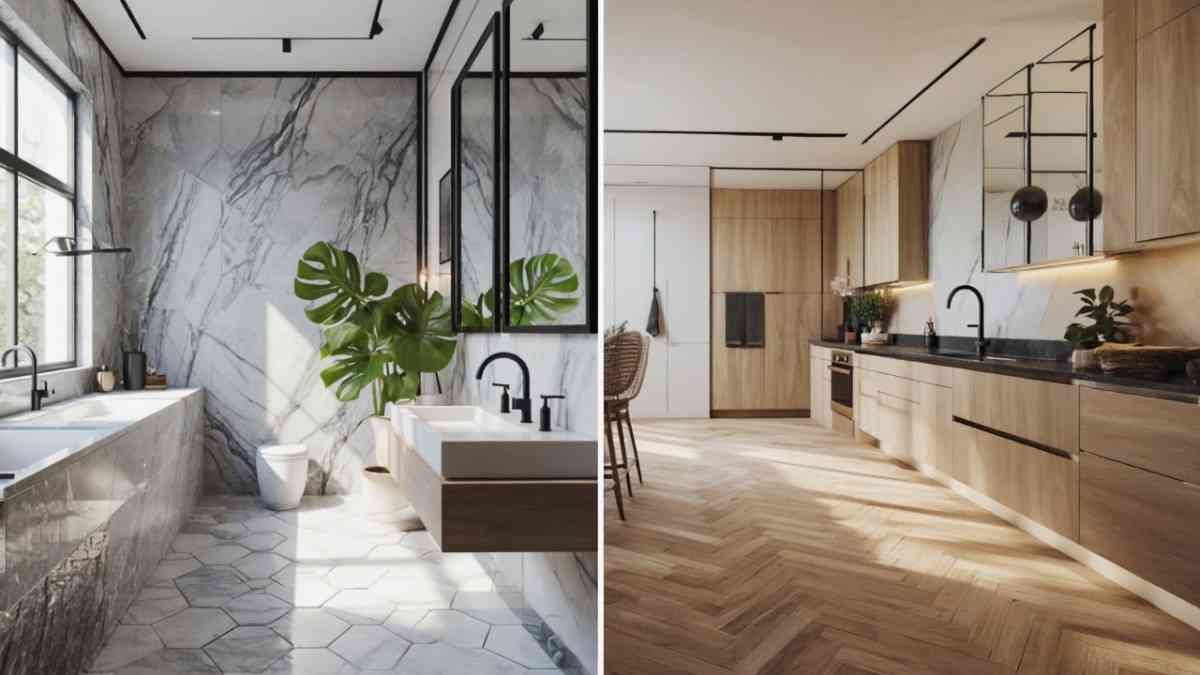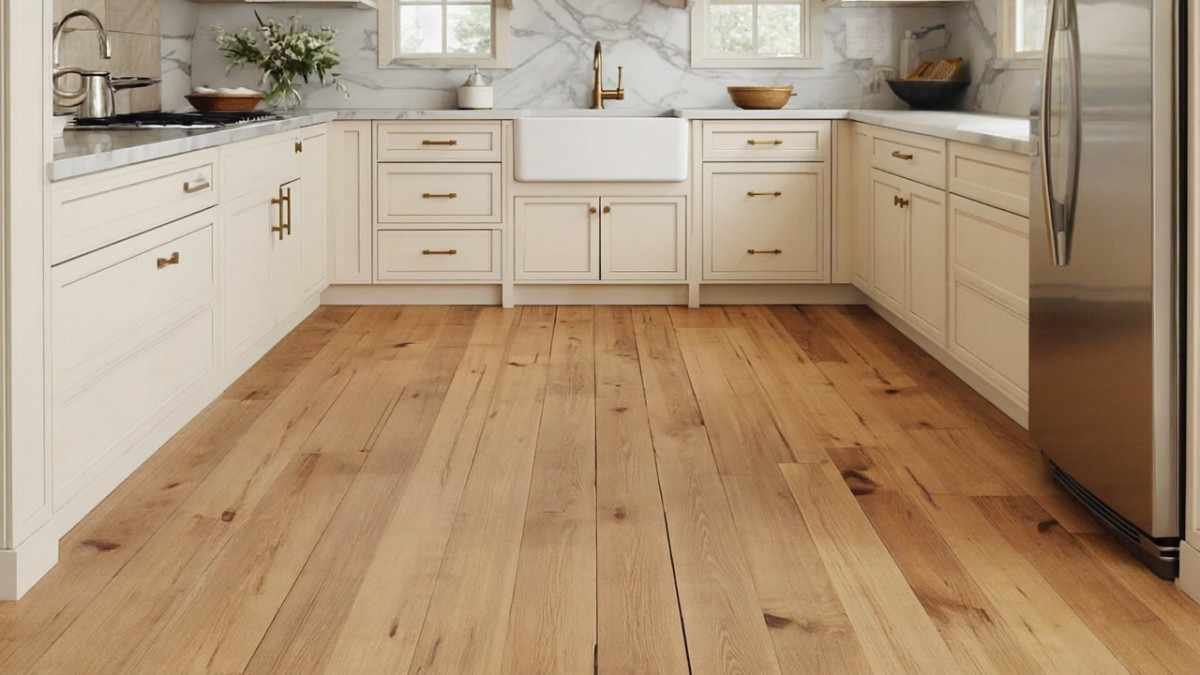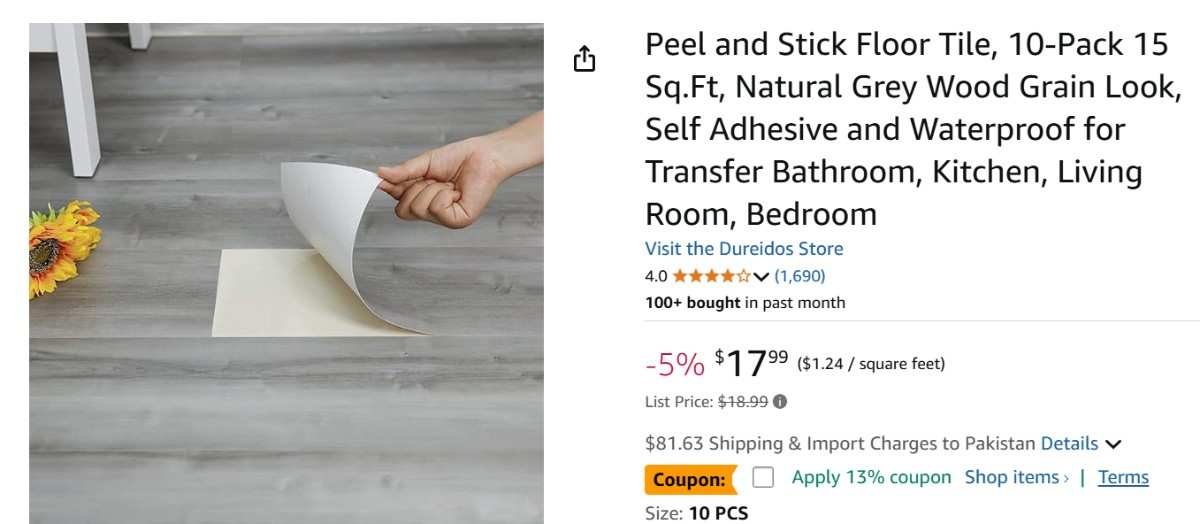Have you ever walked through a bathroom and did you feel like you’re to an spa? Yes, flooring is a major factor of that. The same goes for kitchens. You could have the greatest stove in the world, but if your flooring has a stain or curl it’s a complete loss of style. So let’s cut the fluff. You’re here to find the best flooring for bathroom and kitchen spaces. Not just Pinterest-pretty, but stuff that lasts. Floors that don’t freak out over a splash. We’ll talk tiles, vinyl, old-school hardwoods–everything. Be ready for what’s about to take you on a trip. Stories, tips, fails, wins. All of it.
When My Bathroom Floor Buckled Overnight
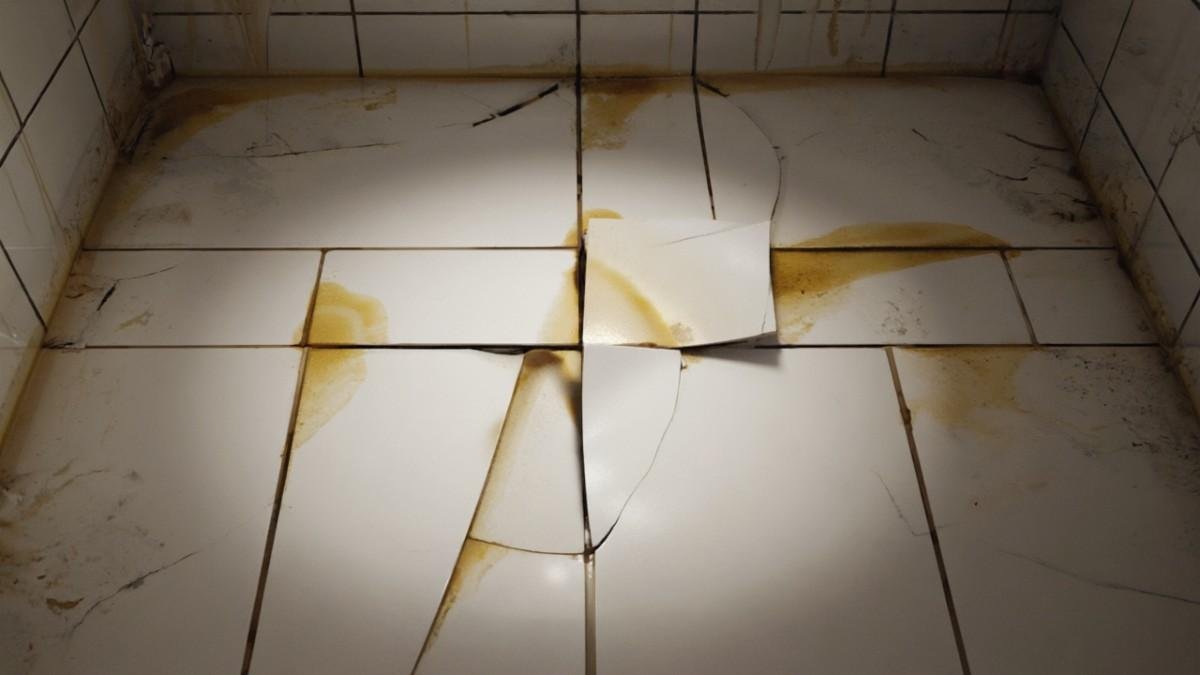
I’ll never forget that night. Storm outside. Steamy bath inside. Next morning, the bathroom floor looked like a wrinkled shirt. It was laminate. Rookie mistake. Laminate looks pretty, sure. But one wrong splash, and it swells like an angry balloon. That moment kicked off my deep dive into the best flooring for bathroom disasters—and solutions. I learned the hard way so you don’t have to. It’s not just about waterproof. It’s about real life. Kids spilling stuff. Steam. Toilets that overflow. Yeah, it happens. So let’s talk options that don’t crumble at the first drop.
Why Kitchens and Bathrooms Are Floor Killers
Your living room? That floor’s chill. But bathrooms and kitchens? Straight-up war zones. We’re talking constant moisture, dropped pots, soapy spills, muddy shoes, sneaky leaks. That’s why the best flooring for bathroom and kitchen needs a bit of superpower. Water-resistant. Durable. Easy to clean. Oh, and it better look good, too. For those who want comfort, not freezing. You’d like to feel that you’re in a tidy space and not in an area of construction. Also, it’s not all about durability. It’s all about how it feels. Mood. And yep, budget.
Ceramic Tile: Classic for a Reason
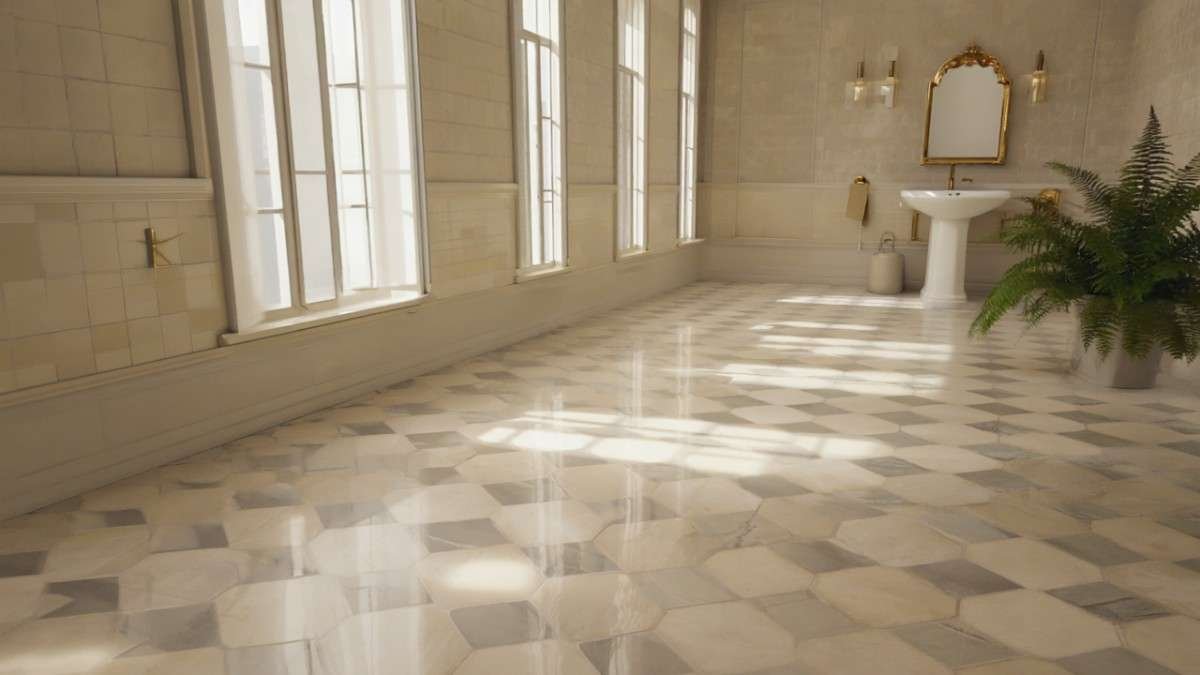
Do you recognize those bright cool, cool tiles that you can see in the bathrooms of hotels? That’s ceramic. And it slaps. It’s basically the poster child of the best flooring for bathroom lists. Water? No problem. Steam? Bring it on. It’s affordable, comes in a million styles, and can even mimic wood or marble. My only beef? Cold feet in winter. You step out of the shower and BAM—hello ice rink. But toss in a heated floor system or a fuzzy rug, and you’re golden. Still, if you’re DIY-ing, prepare to wrestle grout.
Porcelain Tile: Ceramic’s Tougher Sibling
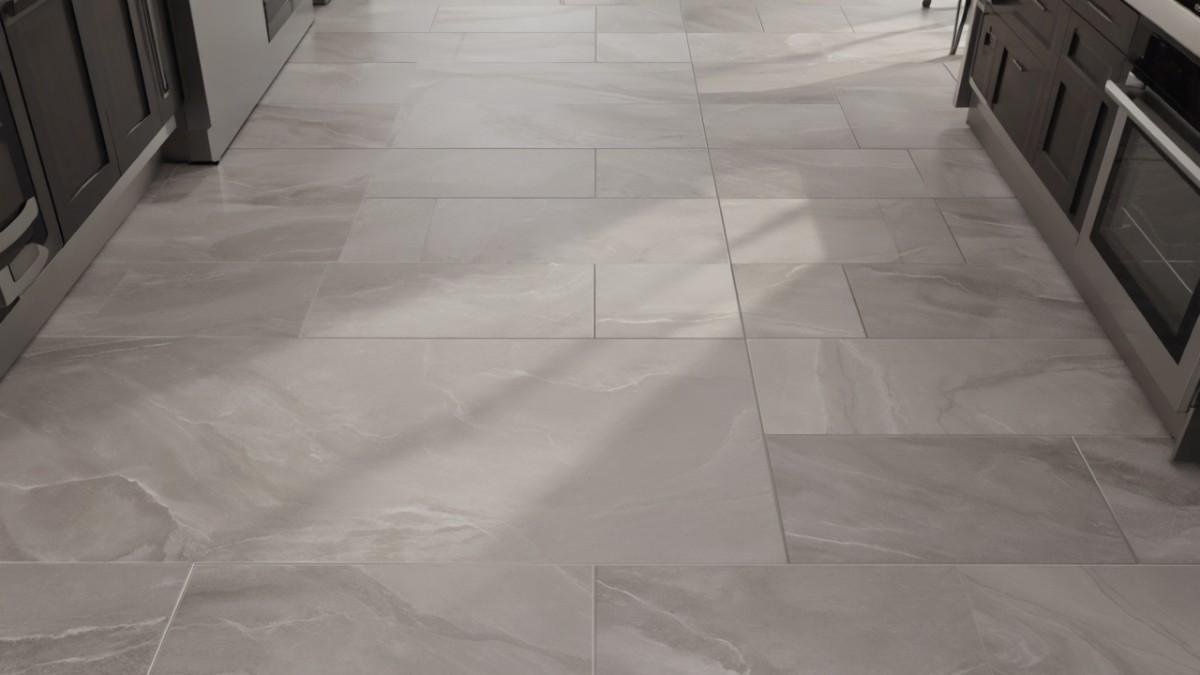
Think of porcelain tile like ceramic’s buff cousin. It’s denser, less porous, and just a bit more “I got this” under pressure. It handles moisture like a champ, which is why it earns its spot on the best flooring for bathroom scoreboard. Plus, you can throw it in kitchens too—it won’t crack under heat or traffic. It can mimic natural stone or wood without the maintenance. Price-wise, it’s a step up from ceramic. Installation’s a pain if you’re not used to tile work. But if you’re going long-term? Worth every penny.
Vinyl Flooring: Underrated Hero
I used to turn my nose up at vinyl. Thought it was tacky. But man, has it leveled up. Luxurious Vinyl Planks (LVP) also known as luxury vinyl tiles (LVT) are currently legitimate options for flooring option for bathrooms. They’re water-proof, comfortable underfoot and are available in styles that look like stone and wood in such a way it’s like doing an extra take. Bonus: They’re budget-friendly and a dream to install. Peel-and-stick, click-lock—take your pick. Best part? If you drop something, it won’t crack or chip like tile. Your feet and your plates will thank you.
Real Wood Floors in the Kitchen? Brave or Foolish?
Okay, hot take incoming. Wood floors in kitchens? Gorgeous. Warm. Timeless. But in bathrooms? That’s a gamble. Wood hates water. It swells, it warps, it pouts. Kitchens are manageable if you wipe up spills fast. Bathrooms though? They’re just too wet. That’s why real hardwood rarely makes the best flooring for bathroom cut. Still, if your heart’s set on wood, go engineered. It has a layered core that handles moisture better. Add a good sealant, and you might just pull it off. Keyword: might.
Engineered Wood: A Safer Wood Look
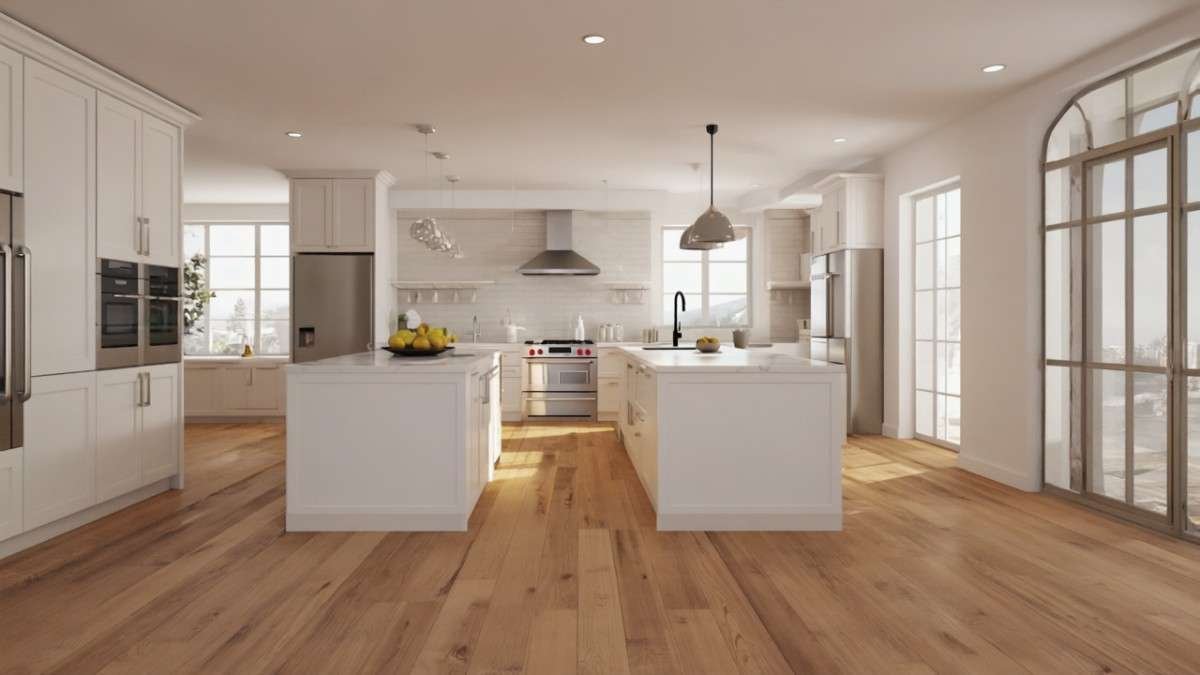
So here’s the wood fix I hinted at: engineered hardwood. It looks like the real deal because it is—but it’s smarter. The base is layered wood, topped with a veneer of real hardwood. That combo makes it more stable in humid conditions. However, do not pour the water in buckets on it. The product isn’t waterproof, but it is water-resistant. If you’re looking for the warm and cozy appearance engineered wood is making its way to the most desirable flooring options for kitchen and bathroom discussions. It costs more than vinyl but less than solid wood. Just treat it right.
Waterproof Laminate: Yes, It’s a Thing Now
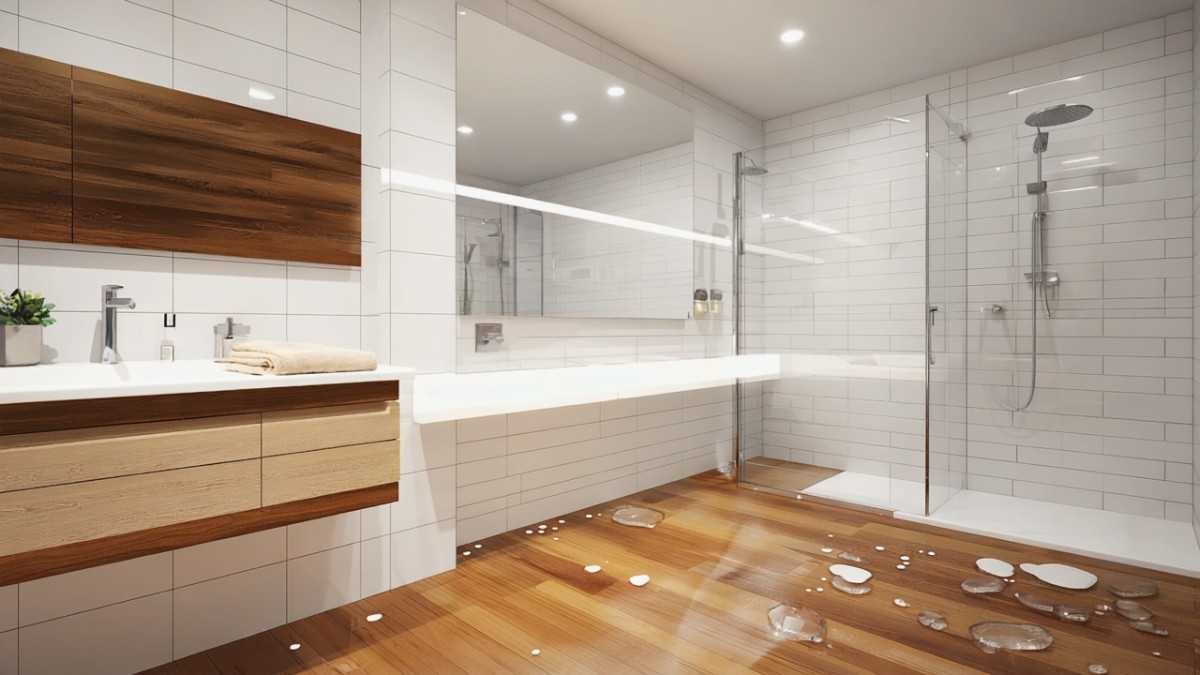
Remember how I trashed laminate earlier? Well, here’s the twist—waterproof laminate exists now. And it’s not bad. The new stuff has sealed edges and tight locking systems that fend off moisture better. Not bulletproof, but enough to make a comeback into kitchens and maybe even guest bathrooms. Is it the best flooring for bathroom setups? For light-use bathrooms, possibly. Just don’t trust it near bathtubs with little kids splashing like wild dolphins. In kitchens, it actually holds up decently if spills are wiped fast.
Natural Stone: Fancy but Fussy
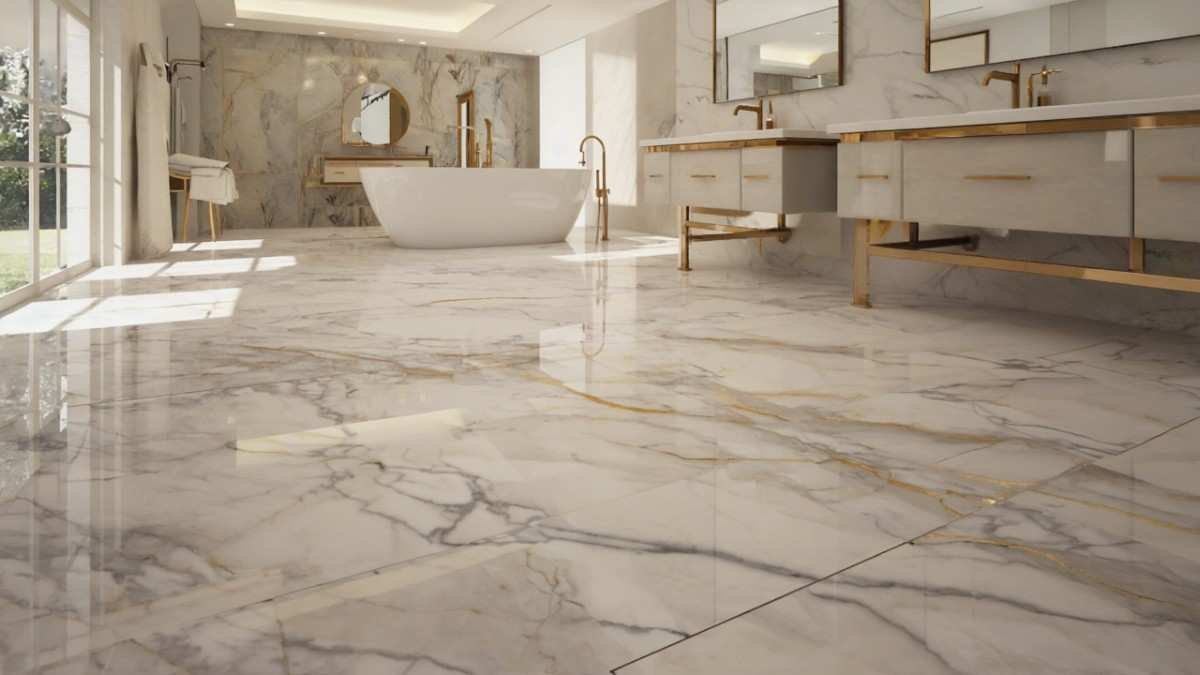
Let’s talk luxury. Natural stone floors like marble, slate, and travertine? Stunning. They scream spa-day or high-end cooking show. But they’re high-maintenance divas. Marble stains. Slate chips. Travertine needs sealing, and then resealing. And all of them cost a pretty penny. So are they the best flooring for bathroom and kitchen? If budget isn’t a worry, and you’ve got time to maintain them, then sure. But for busy families or rental units? Maybe skip the drama. Or go porcelain that looks like stone—best of both worlds.
Concrete Floors: Industrial Cool
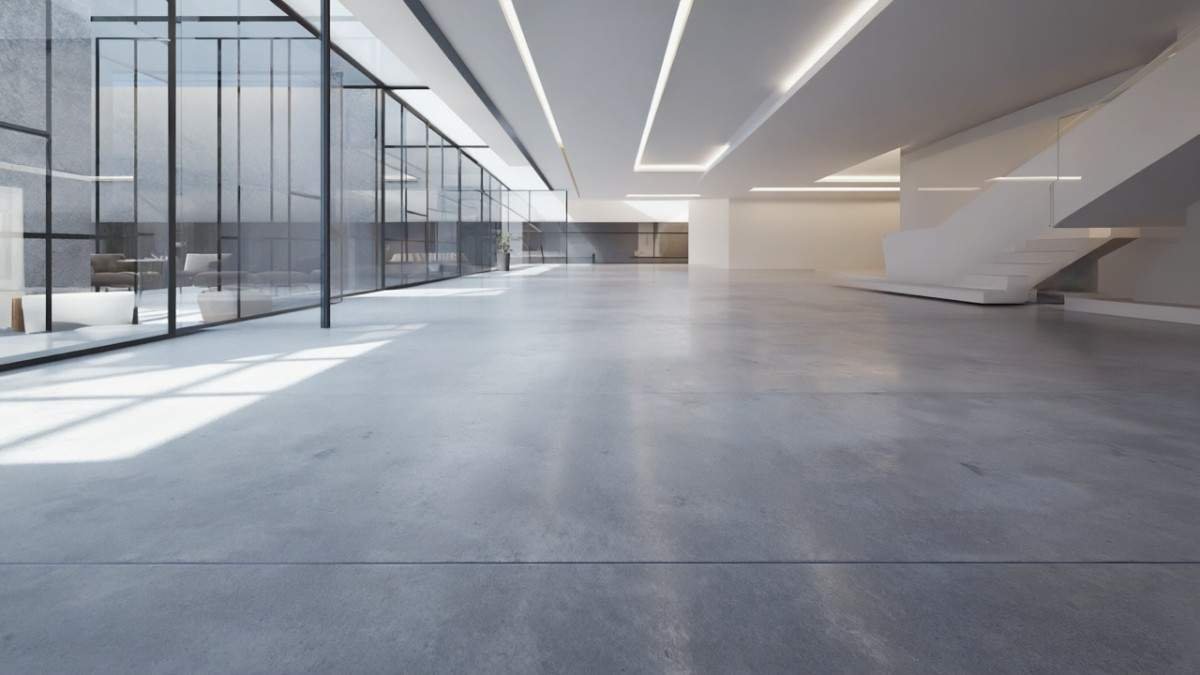
Raw. Rugged. Minimalist. Concrete isn’t only used for basements anymore. If you choose the correct finish and sealing agent, the concrete floor will shine in kitchens as well as bathrooms. They’re waterproof, as tough like nails and simple to keep clean. And surprisingly customizable—you can dye or stamp it for patterns. It’s definitely not everyone’s style, though. Some find it too cold or harsh. And it needs sealing to stay waterproof. Still, if you’re going for that urban loft vibe, concrete may just be the unexpected best flooring for bathroom pick you didn’t see coming.
Sheet Vinyl: Smooth, Seamless, and Sneaky-Good
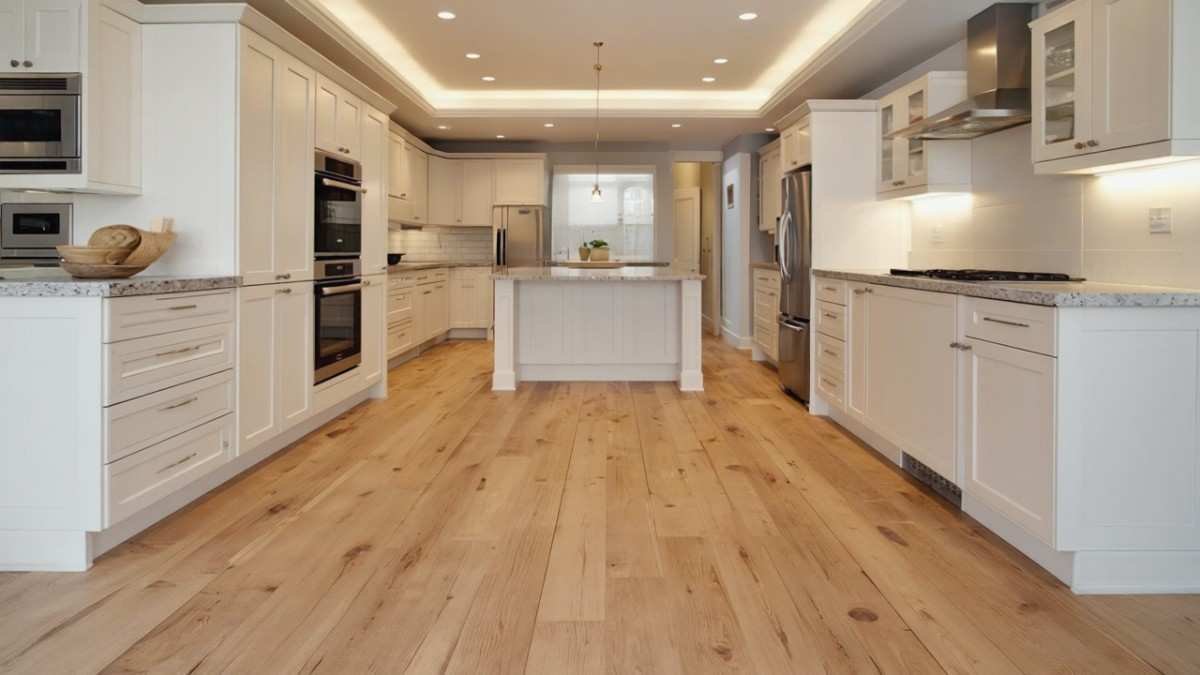
Sheet vinyl’s like that quiet neighbor who ends up being secretly cool. It’s one solid piece, which means zero seams for water to sneak into. That’s gold in a bathroom. Plus, it’s budget-friendly, soft to walk on, and a breeze to clean. A lot of folks sleep on it, but honestly? For tight budgets or quick remodels, it ranks high in the best flooring for bathroom lineup. Downsides? If the sheet tears it, don’t fix it. It’s likely to be necessary to repair the entire sheet. For a comfortable and waterproof choice with little hassle, this is an unassuming thumbs-up.
Cork Flooring: Cozy, Quirky, and Controversial
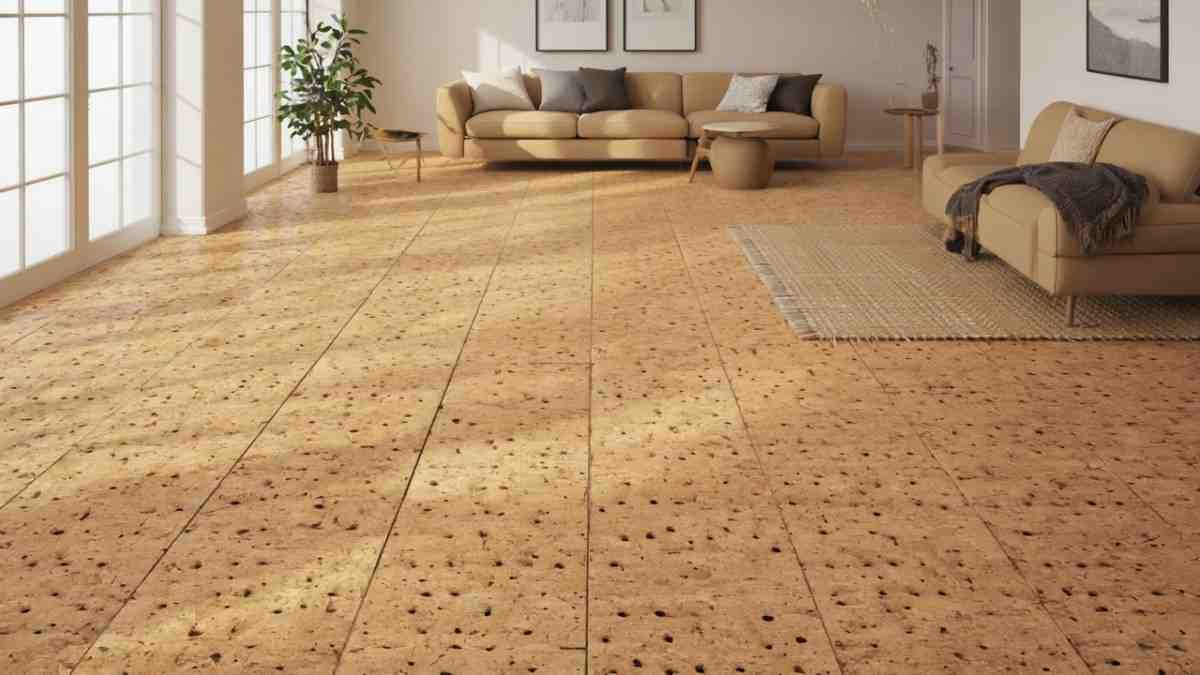
Cork for bathrooms? Yes, I did raise an eyebrow as well. It turns out to be an absolute disaster. Cork is naturally impervious to mildew and mold and the warm feel underfoot is a huge benefit on cold mornings. If properly sealed, it will stand up to the splashes. That said, it needs regular sealing. Miss that, and water seeps in. In kitchens, cork does better. It’s shock-absorbent (great for standing while chopping for hours) and eco-friendly. It’s not the most popular pick, but if you’re into earthy textures and green choices, cork can slide into the best flooring for bathroom debates—if you baby it.
Linoleum: Retro Vibes with a Modern Twist
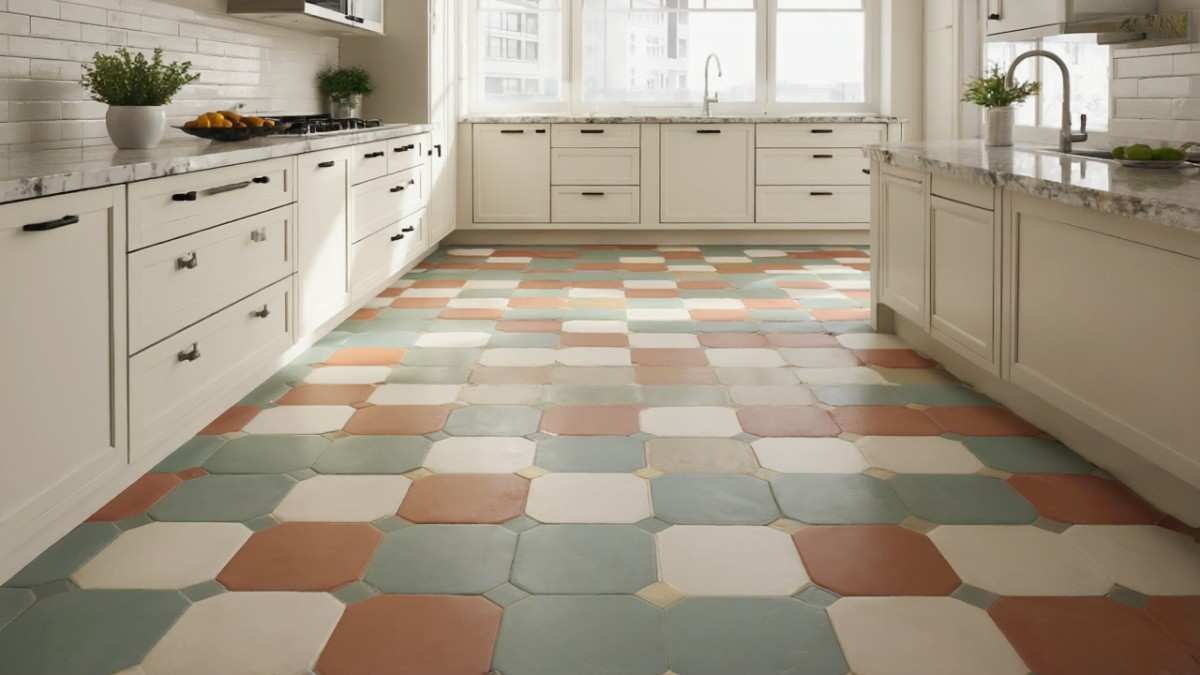
Linoleum’s having a quiet little comeback. No, it’s not the floor in your grandma’s kitchen now. It is made from natural substances like wood flour and linseed oil Linoleum is environmentally friendly comfortable, as well as robust. It’s waterproof but not water-proof, so it’s ideal for bathrooms and kitchens rather than hot ones. Still, with proper sealing, it can stand its ground. Plus, it comes in wild colors and patterns, which is a vibe if you’re tired of “greige everything.” Is it the best flooring for bathroom use? Maybe not in high-splash zones. But for a quirky, sustainable kitchen floor? Definitely worth a look.
Heated Floors: Warm Feet, Happy Life
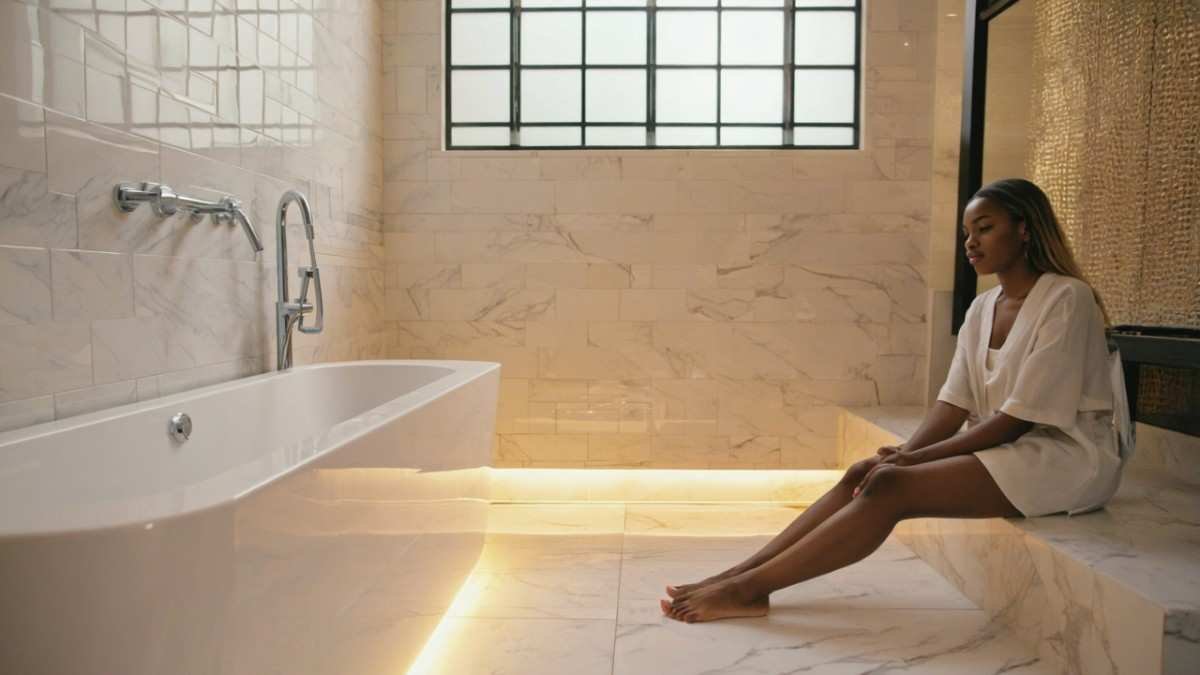
Let’s take a second to talk luxury: heated floors. Once you step on them, it’s game over. Tile or stone becomes a whole new experience with radiant heating underneath. No more hopping from bathmat to bathmat. The heating system does not alter the type of flooring you have, but it can alter your relationship to that flooring. It’s best when it’s made of ceramic, porcelain, as well as stones. Wood and vinyl? Not so much. If you’re investing in the best flooring for bathroom, don’t overlook the warmth factor. Cold toes ruin mornings. Trust me. Heated floors are the MVPs of comfort.
Flooring That Hates Water: Avoid These in Bathrooms

Let’s call them out. Some floors just don’t belong in bathrooms. Carpet? That’s a soggy mess waiting to happen. Bamboo? It swells like crazy. Unsealed wood? Forget it. Even some cheap laminates start peeling the moment they see a drop. If you’re looking for the best flooring for bathroom, avoid anything that doesn’t handle moisture like a pro. Kitchens are more forgiving, but still—choose wisely. The floor’s got to handle sauce splashes, boiling pots, and clumsy feet. Don’t cheap out here. You’ll pay more later. Ask my curled-up old laminate. May it rest in soggy peace.
Small Bathroom? Think Big with These Tricks
Small bathrooms need big ideas. Lighter-colored floors make the space feel open. Larger tiles = fewer grout lines = less visual clutter. Try glossy to experience bounce-light magical effects. In my bathroom, which is tiny I chose lighter gray porcelain tiles. The room suddenly did not feel like an actual closet any longer. If you’re looking to find the perfect flooring option for your bathrooms with small spaces Think about the texture and tone. Matte finishes hide water spots. Large planks trick the eye. And if you want to get funky? Diagonal patterns make the room pop. Small space, big personality—that’s the move.
Kitchen Chaos: The Floor Takes the Hits
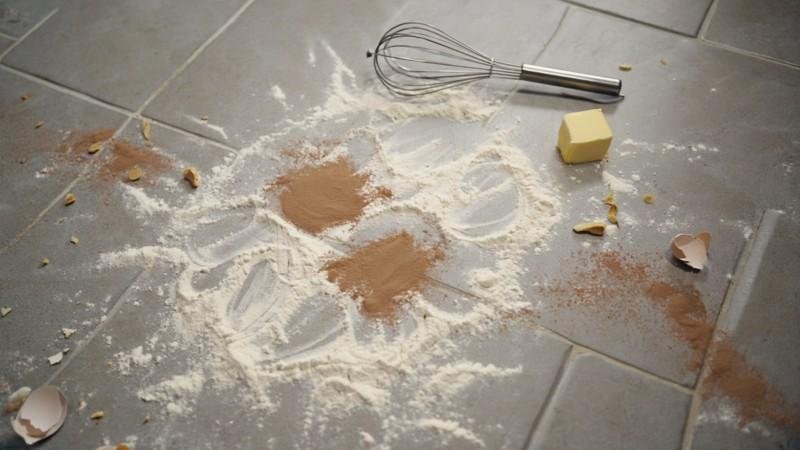
Ever dropped a cast iron skillet? I did. Right on my kitchen floor. Thank goodness it was vinyl. Barely a dent. In busy kitchens, durability is king. You’re dealing with sharp knives, boiling water, oil splashes, dog nails, kid scooters—chaos. The best flooring for bathroom still needs water protection, sure, but in the kitchen? Add shock absorption and scratch resistance to your checklist. Vinyl, tile, and sealed concrete tend to win here. If it can survive Thanksgiving dinner and a toddler’s tea party the next day, you’ve got yourself a winner.
Waterproof vs. Water-Resistant: Know the Difference
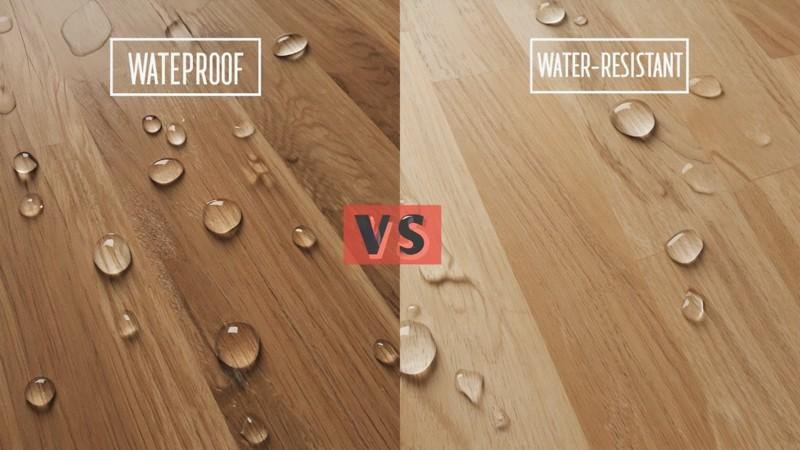
This tripped me up early on. Waterproof is the term used to describe a system that prevents water from getting through. Ever. Water-resistant is a term that means it will keep water out for a while However, don’t be relying on it to last forever. Big difference. The best flooring for bathroom should lean hard into waterproof. Bathrooms see standing water, steam, and sudden floods. Kitchens? Water-resistant might do the trick—if you’re a fast cleaner. So don’t just trust the label. Ask questions. Look at the core materials. Check the warranty. Because when water gets in, that’s when the buckling, warping, and mold party begins.
Grout: The Dirty Secret No One Talks About
Tile’s great. But grout? Ugh. Grout gets grimy fast. Moldy, discolored, and a pain to clean. No one brags about their grout. But they should. Because clean grout = clean-looking floor. When picking tile (especially for the best flooring for bathroom), go for stain-resistant grout. Or better yet, epoxy grout—it resists moisture and stains way better than the cement kind. You can also go with darker shades so dirt doesn’t show as easily. Trust me, if you’re doing tile, spend a few extra bucks on good grout. Your knees—and your bleach supply—will thank you.
Choosing Floors with Pets in Mind
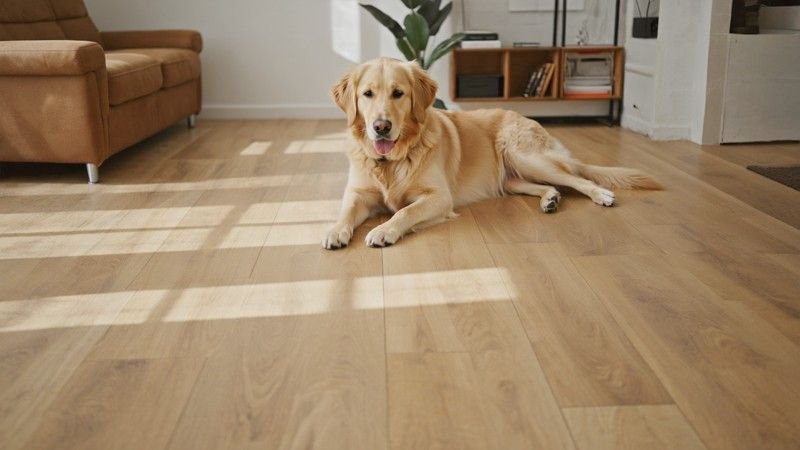
Got a dog? Maybe two? Welcome to the floor-scratch Olympics. Pet claws, muddy paws, the occasional “oops” moment—all reasons to rethink your floor choice. The best flooring for bathroom and kitchen needs to handle not just water, but also pet chaos. Tile is a safe bet—scratch-resistant and easy to clean. Vinyl holds up well too. Skip soft woods or anything with deep grooves. And avoid shiny floors that turn into ice rinks when wet. Trust me, your dog will do the cartoon slip thing. Funny, until someone wipes out.
Budget Floors That Don’t Look Cheap
You don’t need to remortgage the house to get good flooring. Seriously. Some of the best flooring for bathroom and kitchen spaces are surprisingly affordable. Sheet vinyl, peel-and-stick tiles, even waterproof laminate—they’ve all stepped up their game. I once did an entire kitchen floor makeover for less than the cost of a fancy toaster. The trick? Shop smart. Look for closeouts. Don’t get hypnotized by “luxury” labels. And always read the fine print—waterproof doesn’t always mean everywhere. Want designer vibes without designer pain? It’s 100% possible. You just gotta know where to look—and how to seal it.
The Importance of a Good Subfloor
The prettiest floor means nothing if what’s underneath is garbage. I learned this the hard way. Installed brand-new tile, only to have it crack weeks later. The culprit? A bouncy, uneven subfloor. If you want the best flooring for bathroom, start from the bottom. Literally. Subfloors should be level, dry, and sturdy. The kitchen too, especially if you’re placing things that are heavy, like stone. Doing this is like making a home in jelly. No bueno. So before you even look at planks or tiles, check what’s going on below. A good floor needs a strong foundation.
Open-Concept Homes: Match or Mix Flooring?
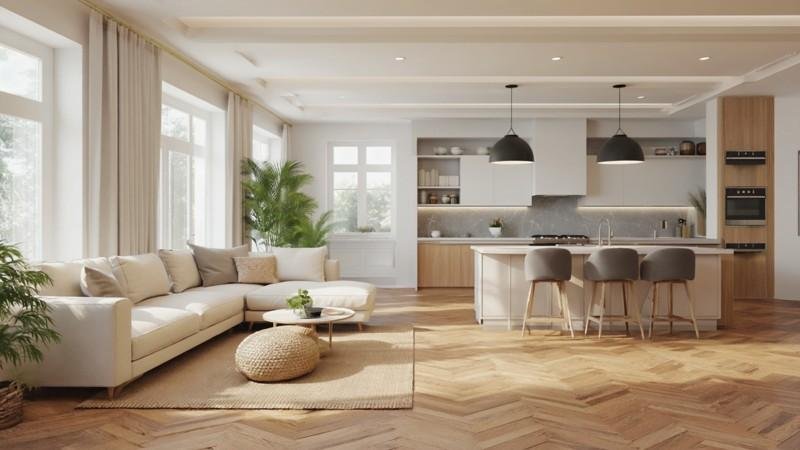
If your kitchen flows into your living room or hallway, you’ve got a design decision to make—match the flooring or switch it up? Some folks go for consistency. Others like a visual break. Here’s the deal: the best flooring for bathroom doesn’t always match the kitchen. And that’s okay. Just make the transition intentional. Use a threshold strip or shift in pattern. Personally, I love a seamless vinyl floor across the kitchen and dining, then a tile shift in the bath. Feels cohesive but still defines the space. Don’t be afraid to play with contrast.
DIY or Hire a Pro? Be Real With Yourself
Installing your own floor sounds empowering… until you’re six hours deep, stuck on one tile, and covered in adhesive. Been there. For simple installs like peel-and-stick vinyl or click-lock planks? DIY might be totally doable. But tile, natural stone, or anything requiring perfect cuts? That’s pro territory. Especially in bathrooms. One slope mistake and water goes the wrong way. If you want the best flooring for bathroom that won’t fail in a month, sometimes you gotta call in the experts. Ask yourself: is your weekend worth the stress—or the redo cost?
Slippery When Wet: Safety First
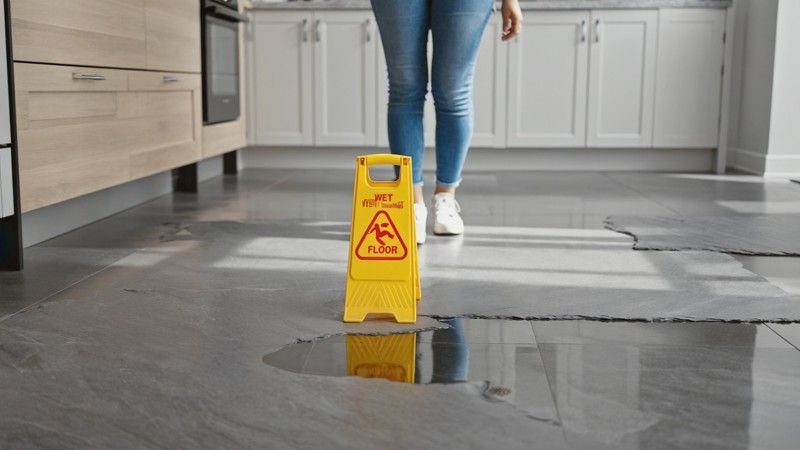
Ever slipped on wet tile and pulled a muscle you didn’t know existed? Yeah. Me too. Some floor types get dangerously slick when wet—especially glossy tiles or polished concrete. In kitchens, it’s annoying. In bathrooms, it’s dangerous. So if you’re hunting for the best flooring for bathroom, always check the slip rating. Look for textured finishes or matte surfaces. And rugs help, but only if they stay put. Non-slip backings are a must. If Grandma visits or you’ve got kids racing around after a bath? Trust me, grip matters more than glam.
Groutless Options for the Lazy Cleaner
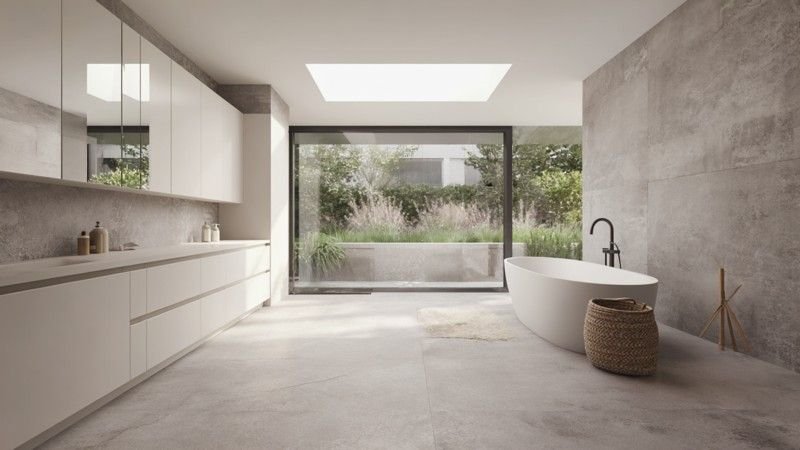
Some people love scrubbing grout lines. I am not one of them. If you feel me, go grout-free. Sheet vinyl, large-format tiles, waterproof laminate—they all cut down on those annoying little dirt magnets. In fact, one reason I switched my guest bathroom floor was to escape the never-ending war with mildew. If you want the best flooring for bathroom and cleaning isn’t your thing, steer clear of small tiles with narrow grout lines. Go big. Go seamless. Go sanity-saving. Because let’s be real—you have better things to do than fight with a toothbrush and bleach.
Color Choices: Light, Dark, or Wildcard?
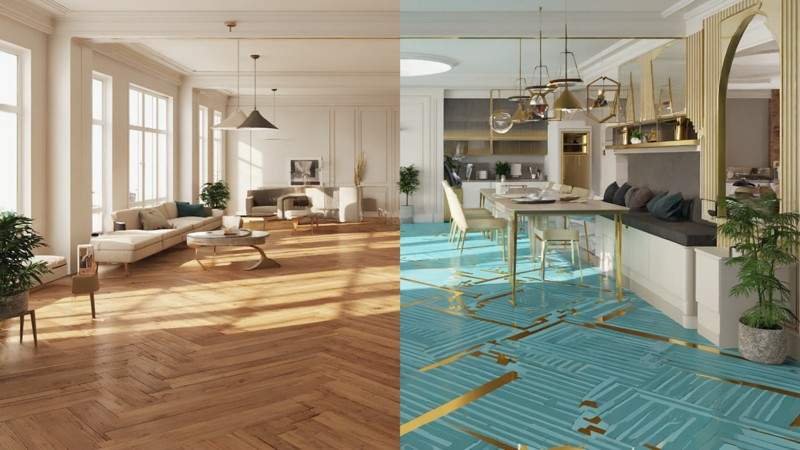
Your floor sets the tone—literally. Light colors make small bathrooms feel open. Dark floors? Cozy, dramatic, rich. Want something bold? Go for pattern–checkerboard, Moroccan tile, faux terrazzo. Be confident and enjoy yourself. Bathrooms and kitchens do not have to be boring snoozefests. That said, super light floors show dirt fast. Super dark floors? Show dust and water spots. The best flooring for bathroom blends style with sanity. I like mid-tones—greige, warm taupe, soft blues. Stylish but forgiving. Because no one wants a floor that tattles on every footprint.
Eco-Friendly Flooring Options
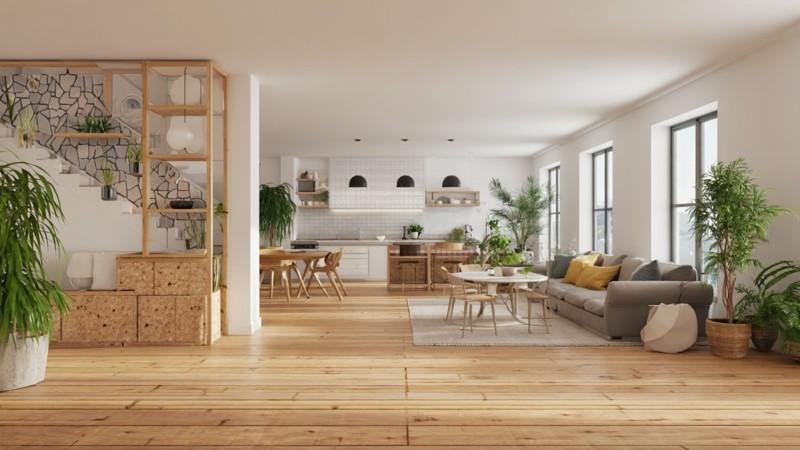
Going green? Good on you. There are flooring options that don’t wreck the planet—or your budget. Bamboo (when treated right), cork, linoleum, and even recycled tiles are all solid eco picks. Some vinyl brands now offer phthalate-free options too. Look for FloorScore or GreenGuard certifications. For the best flooring for bathroom that’s both sustainable and stylish, linoleum and cork are solid bets—just keep up the sealing. Feel more relaxed knowing that the bathroom won’t be releasing strange chemicals each time the shower gets hot. Your airways (and your grandkids to come) will be thankful to for your efforts.
Moisture Matters More Than Style—Sometimes

Okay, let’s get brutally honest. You might love the look of that raw wood floor. But if your bathroom looks like a sauna by 9 a.m., it’s a disaster waiting to happen. The best flooring for bathroom isn’t just about “ooh pretty.” It’s about function. Moisture is relentless. Constant. Sneaky. And it ruins the wrong floor fast. So while style matters, practicality has to win. You can always find stylish and waterproof. But stylish and totally wrong for moisture? That’ll cost you more in repairs than it saved in looks. Be smart. Look twice.
Rental Friendly Bathroom and Kitchen Floors
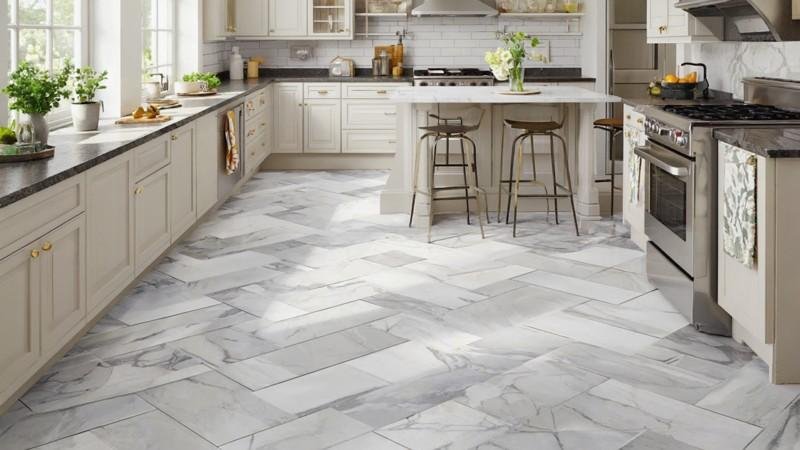
Renters, this one’s for you. You probably can’t rip up the whole floor—but you can improve it. Tiles made of vinyl that can be peel-and-stick or floating floors change the game. They’re affordable, temporary they’re also very effective and can make a huge visual impact. In my last rental, I slapped down some stone-look vinyl over an ugly orange floor. Instant upgrade. For the best flooring for bathroom in rentals, you want something easy to remove, water-resistant, and budget-friendly. Bonus if it makes your security deposit more likely to come back. Just make sure your landlord’s cool with it. Or… do it sneakily (kidding… kind of).
The Weekend Warrior’s Guide to Flooring
Some weekends you feel bold. Watch a few instructional videos take a box-cutter then you’re now an expert at DIY flooring. If this is the case, opt for a material that will not make mistakes – think peel-and-stick vinyls floating laminate, LVP. These floors let you mess up a little without total ruin. The best flooring for bathroom projects you can do solo are the ones that won’t break your spirit or your wallet if you miscut something. Just measure twice, take breaks, and don’t floor hangry. Trust me, flooring plus low blood sugar = disaster.
Flooring for High-Traffic Homes
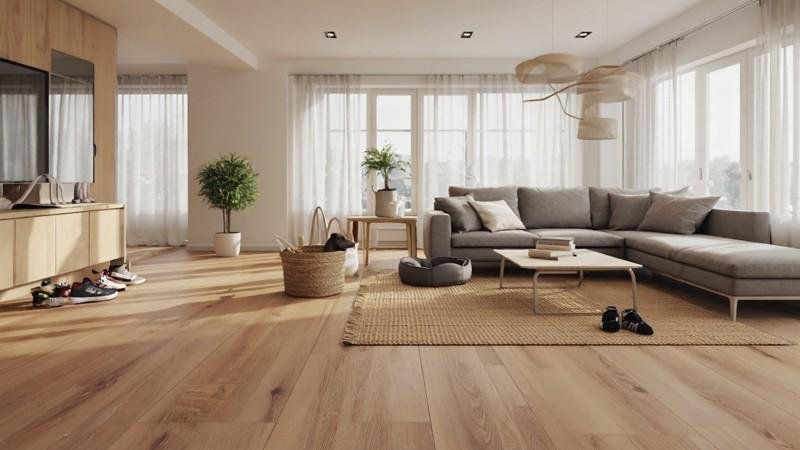
Got a big family? Friends always over? Dog zoomies in the kitchen? Then traffic matters. Your floor takes the brunt of everyday chaos. The best flooring for bathroom and kitchen in busy homes has to be strong and scratch-resistant. Tile, luxury vinyl, and sealed stone all pass the test. Skip anything soft or porous. You want floors that laugh at muddy boots and shrug off toy cars. And if you’re constantly cleaning, go for something low-maintenance. Because real talk—you don’t want your floor to be another full-time job.
Sealing the Deal: Why Sealants Matter
You’ve got your dream floor picked. Awesome. But now comes the boring part: sealants. Don’t skip it. Sealing grout lines, porous stone, or wood floors makes or breaks their future. Without sealant, water seeps in and wrecks everything quietly. The best flooring for bathroom is only as good as the seal that protects it. Sealants aren’t flashy. No one notices them. But they’re the unsung heroes that keep mold out, stains away, and repairs far off. Plus, most need reapplying only once a year or two. Easy win.
The Mid-Century Flooring Mistake I’ll Never Make Again
I once tried to match my kitchen to a vintage ’60s vibe. Think mustard yellow tile and faux-wood vinyl. It looked fun on Pinterest. In real life? Regret. The materials were cheap, the pattern was dizzying, and it aged in dog years. I ripped it up a year later. That experience taught me: don’t chase trends unless you really love them. The best flooring for bathroom or kitchen should outlast fads. Go classic, neutral, or at least easy to update with rugs or accents. Don’t commit your floors to TikTok trends.
Humidity: The Invisible Enemy
If you do not sprinkle water all over, humidity can be found everywhere. Bathrooms turn into mini saunas daily. Kitchens steam up from boiling pots. And over time, all that invisible moisture seeps into floors. That’s why even “dry-looking” spaces still need water-safe floors. The best flooring for bathroom handles humidity without swelling, buckling, or getting musty. Engineered wood, porcelain tile, and LVP do well. Real wood? Not so much. So check the humidity tolerance of anything you install. Your floors will thank you every sweaty summer morning.
Open Shelving and Floor Visibility
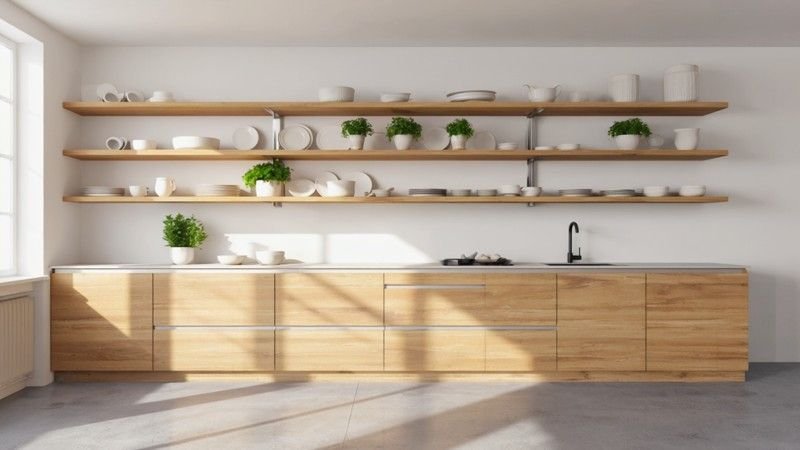
Funny thing about open shelving: it puts your floors in the spotlight. No base cabinets to hide messy edges or cracked tiles. The floor becomes your backdrop for every picture that you take, from breakfast to every broken bowl of cereal. If you’re using open shelves in your bathroom or kitchen it’s important to have flooring that’s attractive from every angle. The best flooring for bathroom here? Think seamless, bold, clean lines. Sheet vinyl, wide-plank tile, or large porcelain slabs nail it. Bonus points if they’re easy to mop—because open shelving also means more dust.
Moody Bathrooms Need Moody Floors
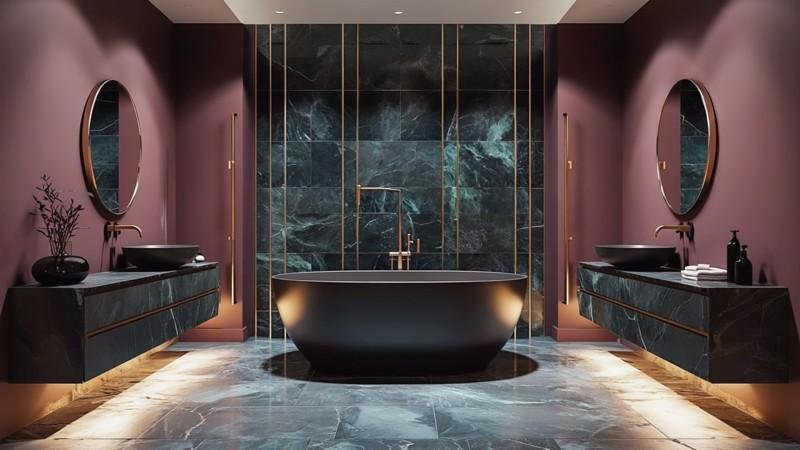
Designing a moody bathroom? Dark walls, brass fixtures, moody lighting? Your floor better keep up. Light tiles can kill the vibe fast. Go dark and dramatic. Think charcoal hex tile, matte slate, or black marble-look vinyl. These give major drama without overwhelming the space. But be warned—they show water spots and dust easily. So if you’re chasing a vibe, you gotta clean a little more. Still, for the right look, it’s worth it. The best flooring for bathroom isn’t just functional—it tells a story. And sometimes that story’s in black and gray.
Transitional Floors Between Wet and Dry Zones
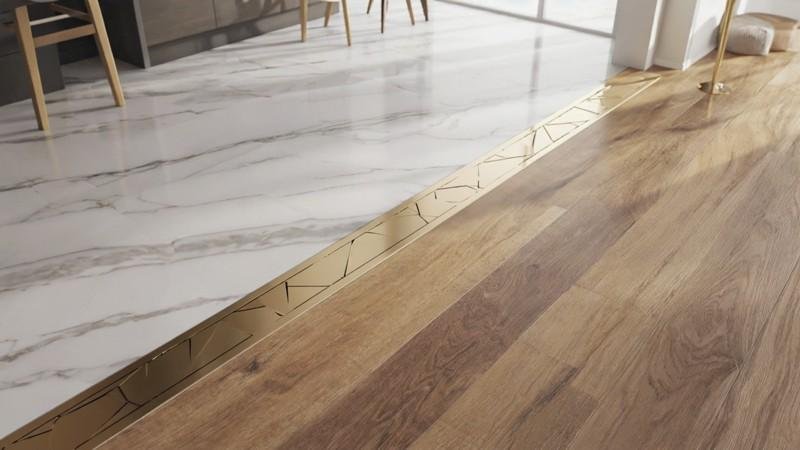
In open layouts, you may have a single floor connecting the bath to a hallway or the kitchen to a laundry. This can get tricky. You want continuity, but also function. That’s where transitional floors shine. Vinyl planks that mimic wood work well—they look dry-zone appropriate but handle wet like pros. The best flooring for bathroom that continues into the hallway? Something stylish but secretly waterproof. Bonus points if the color works with both your sleek vanity and your living room rug. It’s all about visual flow.
What Real Estate Agents Say About Bathroom Floors
Talked to a realtor friend once, asked them what buyers notice most. She said: bathrooms. And not just the tub—the floor. If it’s outdated, stained, or sketchy-looking? Red flag. Updated, clean flooring adds instant appeal. So if resale is on your mind, choose the best flooring for bathroom that looks high-end without breaking the bank. Tonal neutrals, top quality tiles or vinyl that is waterproof are major win-wins. Beware of loud patterns and fashionable colors unless you’re planning to stay for a long time. The floor says “this place is cared for”—or it doesn’t.
How Often Should You Replace Flooring?
If you’re lucky and you choose wisely, your floor should last over a decade. Porcelain tile can go 20+ years. Good vinyl? 10–15. Laminate? Maybe 7–10, depending on traffic and care. But bathrooms and kitchens wear out floors faster than other rooms. Leaks, drips, drops—they take a toll. The most durable flooring for bathrooms can withstand pressure But nothing lasts forever. Look for any soft spots, cracks marks, or loose edges. This is a sign that it’s time to get your act together. And if your floor creaks, curls, or smells weird? Yeah, rip it up.
The Final Verdict: What’s Actually the Best Flooring for Bathroom and Kitchen?
If I had to crown a winner? Porcelain tile takes the throne. It’s tough, waterproof, stylish, and relatively affordable. LVP is a close second—comfy, easy to install, and super water-resistant. Want eco points? Try sealed linoleum or cork. Going luxury? Heated concrete or natural stone. But really, the best flooring for bathroom is the one that fits your life. Your budget. Your chaos level. There’s no one-size-fits-all answer. But now? You’ve got the knowledge. Go make your floors proud.

